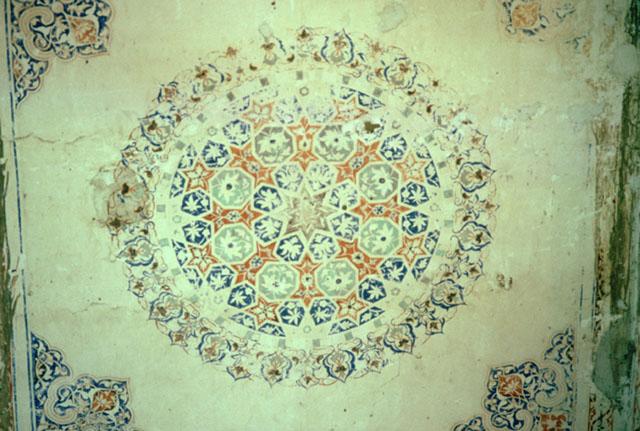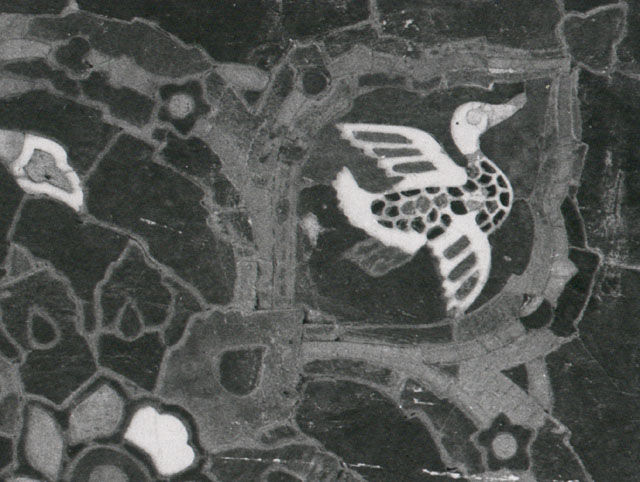The shrine there was disappointing
The 8th of May 1934 was quite a disappointing day for Robert Byron. That day, on his way to Kariz, due to the heavy rain, Byron decided to skip his visit to Sang Bast and its monuments and go directly to the Turbat-i Sheikh Ahmad Jami Shrine. Unfortunately, Byron was disappointed by this visit, and also by his lunch:
“We meant to stop at Sengbest to examine an eleventh-century mausoleum and minaret which are visible a mile off the road. But a rainy sky made us push on to Turbat-i-Sheikh Jam. The shrine there was disappointing. So was our lunch.”
So disappointed he was, that he did not devote to the monument even a single line or a short description.

Regardless of Byron’s attitude towards this complex, it is a fact that the Turbat-i Sheikh Ahmad Jami Shrine, is a huge complex, comprising many parts, and deserves at least a short description.
Originally, the shrine was not that big though. Its construction started in 1236 CE, according to Lisa Golombek. The shrine was the resting place of a Sufi theologian and poet, Sheikh Ahmad-i Jami. He spent most of his life in the small town of Buzajan, where he was buried. The city was later renamed Turbat-i Jam, thanks to his tomb (if you were wondering). After the death of Sheikh Ahmad-i Jami, his shrine soon became a pilgrimage destination, and remained so until the 16th century, when the Shi’i doctrine prevailed, under the Safavids. The information about the Sheikh, his life, and what he left behind after his death, is certainly noteworthy. His family is still well known and respected, and according to Moayyad (in his article for the Encyclopaedia Iranica), the majority of his offspring still live in Jam and Herat. He also recounts that he met them, in 1968.

As happens with pilgrimage destinations (see for instance the Mashhad-i Fatima in Qom, or the Ziyarat-i ‘Abd Allah Ansari), as the site was becoming more popular, it was renewed and expanded, with new buildings and parts. Lisa Golombek recognized as much as ten construction periods, all compressed in the span of two centuries: from 1236 to 1443 CE. Her primary source for the study of the building was a manuscript, the Magamat-i Ahmad-i Jam.
The core of the complex is the Dome Chamber, the gunbad, that is located next to the Sheikh Ahmad-i Jami’s uncovered grave. It is part of the original building, dating back to 1236, and according to Lisa Golombek’s survey, it was built Along with the Dome Chamber, many other parts compose this huge complex: the Grand Iwan, the Saracha Khanqah (hospice), a couple of madrasas (the Fariwandi Madrasa and the Firuzshah Madrasa), and a number of mosques (the Old Mosque, the New Mosque, and the Kirmani Mosque). In some cases, the monuments that composed the complex did not survive to our days, and in some other, as in the case of what the Magamat calls “Madrasa of Amir Shah Malik”, no traces are to be found.

Byron only took some photos of the exterior of the monument: maybe because it was raining? Maybe because he was tired? Maybe he had finished the film? Or maybe he was just disappointed that day.
In any case, had he entered the complex and the buildings that were still there, he would have found, probably, something of interest. For instance, the beautifully carved stucco mihrab in the mausoleum, or the arabesque fresco panel in the Dome Chamber. Or if he just went nearer he could have seen the nice Safavid tilework.

Instead, he stayed, disappointed, far from the building, and probably failed to notice many of the features that make this monument noteworthy.
On a personal, philosophical level, we can read Byron’s experience at the Turbat-i Sheikh Ahmad Jami Shrine as a teachable moment for us: never be angry, disappointed, or negative, to the point you may miss something beautiful in front of your eyes, something you have travelled for months to reach, and that you will probably never see again.
Sources and further readings
Archnet is as always a valuable source of information and of photos.
I also suggest everyone have a look at the article of the Encyclopaedia Iranica, about the life of Sheikh Ahmad-i Jami, written by Moayyad: H. Moayyad, “Ahmad-E Jam,” Encyclopædia Iranica, I/6, pp. 648-649; an updated version is available online [accessed on 10th April 2018].
Other sources are:
Lisa Golombek, “The Chronology of Turbat-i Shaikh Jam”, in Iran: Journal of the British Institute of Persian Studies, IX, (1971), pp. 27-44.
Bernard O’Kane, “Natanz and Turbat-i Jam: New Light on Fourteenth Century Iranian Stucco”, in Studia Iranica, XXI (1992), pp. 85-92.
Bernard O’Kane, “Taybad, Turbat-i Jam and Timurid Vaulting”, in Iran: Journal of the British Institute of Persian Studies, XVII (1979), pp. 87-104.
Bernard O’Kane, Timurid Architecture in Khurasan, Mazda Publishers, Costa Mesa 1987, pp. 217-222, 317-318.